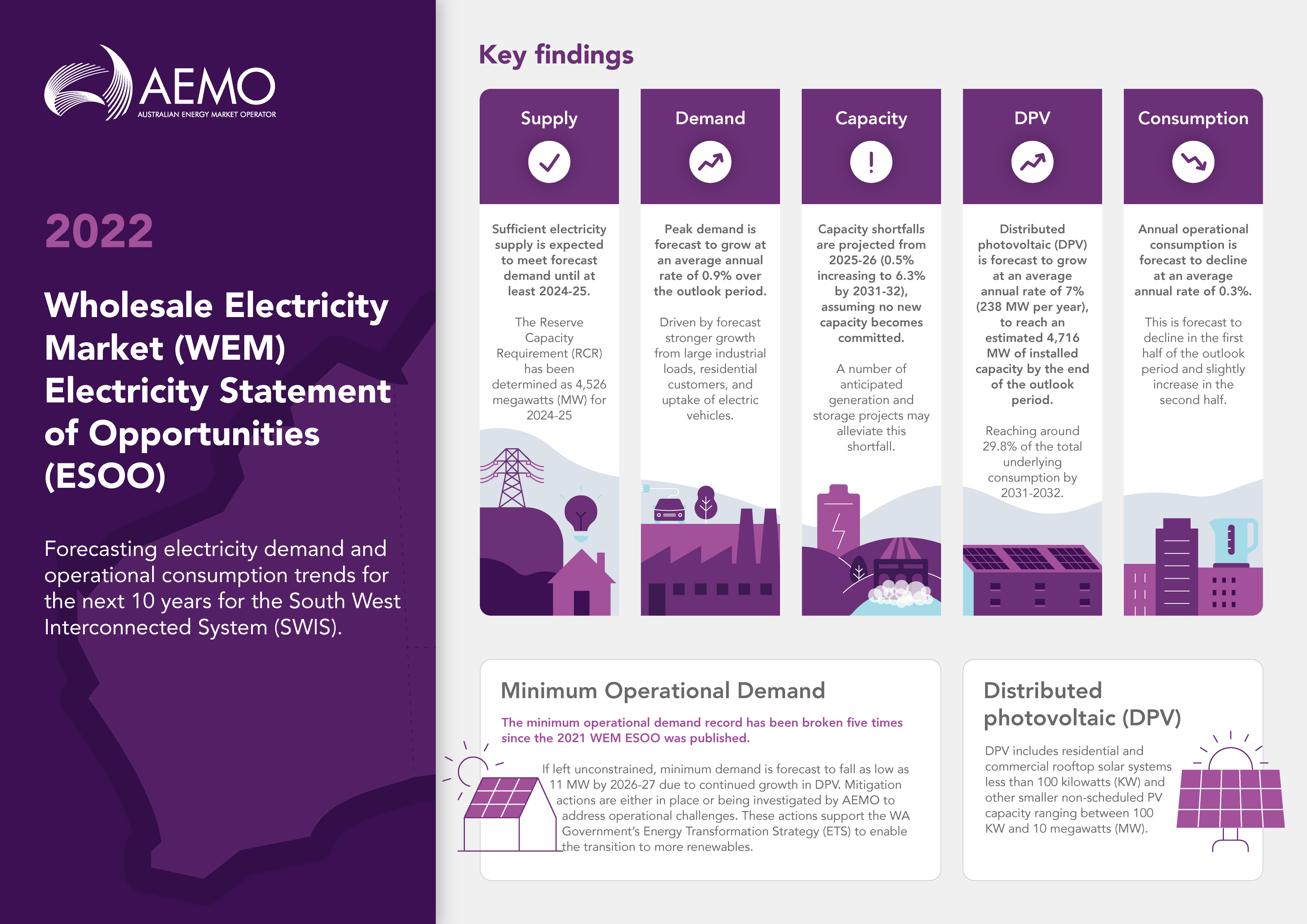AEMO has published its annual reliability outlook, the 2022 Wholesale Electricity Market (WEM) Electricity Statement of Opportunities (ESOO), forecasting that sufficient electricity supply is available to meet projected demand until at least 2025 in Western Australia’s (WA) major power system.
The WEM ESOO is an important step in the Reserve Capacity Mechanism (RCM), which ensures electricity reliability in the South West Interconnected System (SWIS). The report sets the Reserve Capacity Requirement (RCR) for 2024-2025, which has been determined at 4,526 megawatts (MW).
AEMO’s Executive General Manager WA and Strategy, Kate Ryan, said: “The WEM ESOO forecasts annual peak demand growth of 0.9% over the 10-year outlook period, due to increased energy use by industrial loads, growth in new housing connections, and the uptake of electric vehicles. This can be met with timely investment in new, firmed renewable capacity.”
The report forecasts a shallow shortfall of 21 MW from 2025-26 following the retirement of Muja C in 2024 and as demand increases, which could potentially grow to 303 MW by 2031-32 if no new capacity is committed. This forecast does not factor in the recent announcement by the WA Government.
“New, firmed renewable capacity, such as the WA Government’s plan to invest in new wind generation and battery storage projects as it retires coal-fired power stations, can help alleviate any projected shortfalls as the future of WA’s power system takes shape towards 2030,” said Ms Ryan.
The report affirms the rapid pace and scale of the transition underway in WA’s power system, with distributed photovoltaic (PV) installations expected to grow at an average annual rate of 7% (238 MW per year) to reach an estimated 4,716 MW of installed capacity by 2031-32 (29.8% of underlying demand).
As a result, overall operational consumption is forecast to decline at an annual rate of 0.3% over the outlook period. Further, forecast minimum operational demand, the demand for electricity from the grid, is expected to decline from the current record low of 765 MW to 11 MW by 2026-27 if left unconstrained. A range of measures have been introduced in recent years to maintain energy security during low demand conditions.
“With renewables already providing up to 78.6% of power generation at any one point of time in the SWIS, AEMO is making every effort to develop tools that will enable grids that could run at times of up to 100% peaks of instantaneous renewable generation by 2025,” said Ms Ryan.
“As the energy transition in WA continues to accelerate, AEMO will keep working with the energy sector in WA and Australia to share our learnings and expertise. This will enable the transition to low-emissions energy whilst creating more opportunities for consumers to benefit from new, decentralised technologies like solar, batteries, and electric vehicles.”
ENDS
Download the 2022 WEM ESOO visual overview here.








